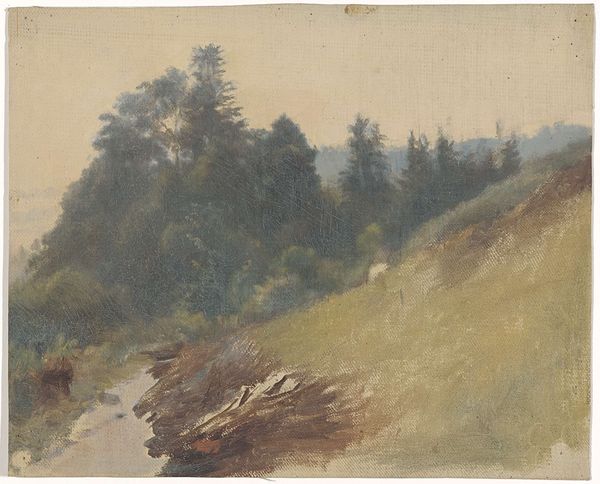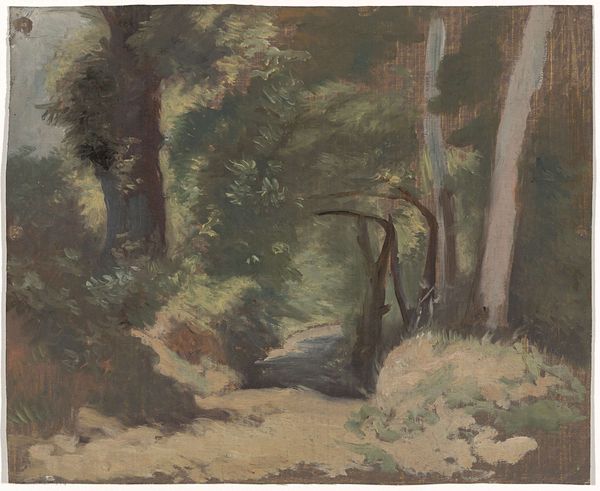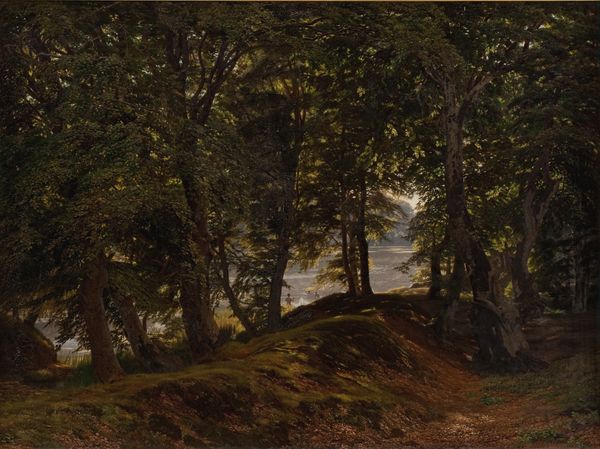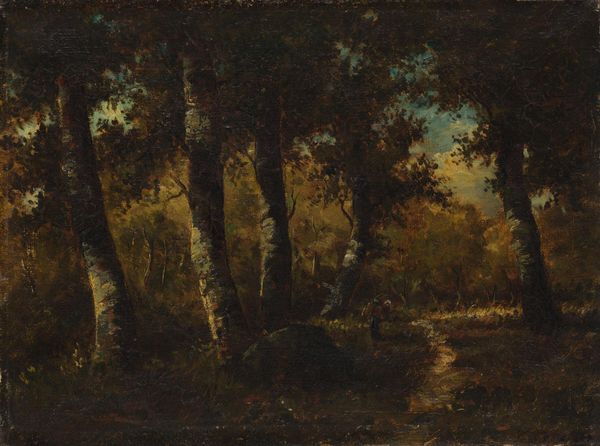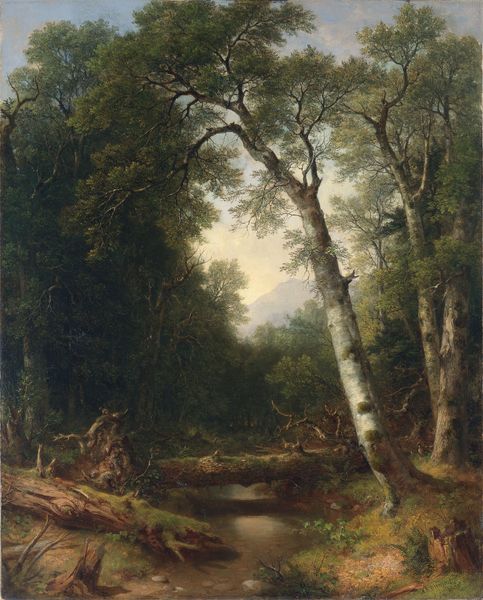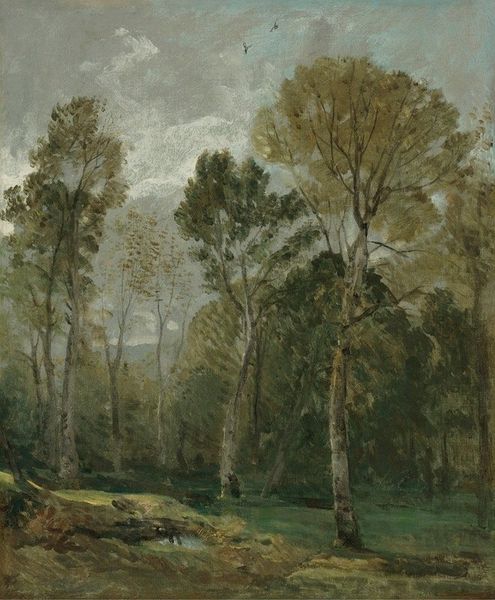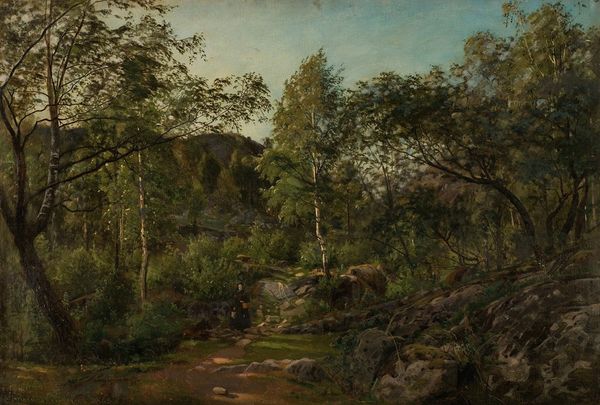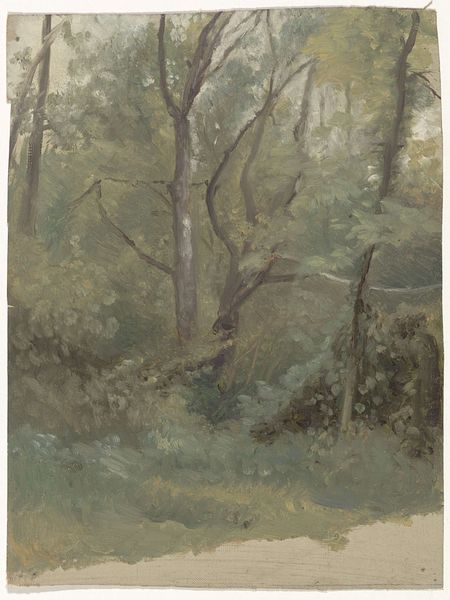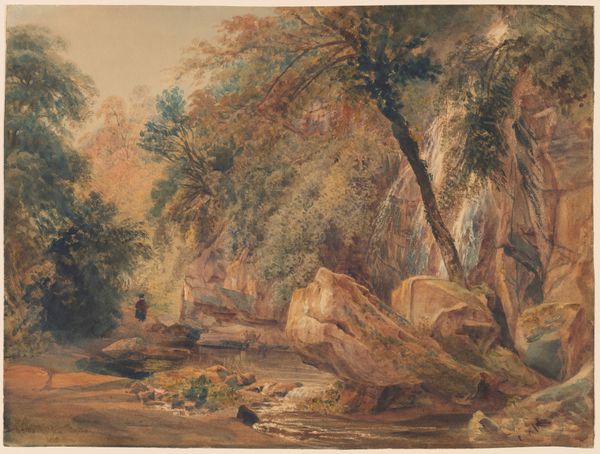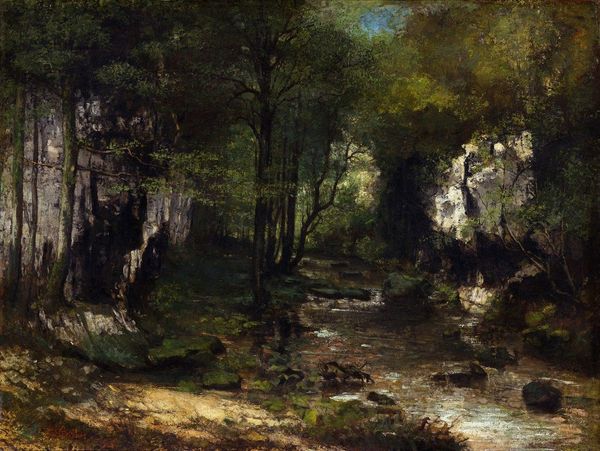
Dimensions: height 334 mm, width 270 mm
Copyright: Rijks Museum: Open Domain
Guillaume Anne van der Brugghen’s painting offers a seemingly straightforward depiction of nature. Yet, the forest has always been a loaded symbol. Here, the trees loom, stoic observers, each a silent sentinel rooted in the earth. This motif appears across cultures, from ancient Greek groves to the enchanted forests of medieval tapestries. Consider the tree not just as a botanical specimen but as a pillar connecting the earthly and spiritual realms. The forest’s edge in art often signifies a transition, a boundary between the known and the mysterious. The presence of a dry stream bed introduces the melancholic idea of nature’s cycles. Water—life-giving, cleansing—is absent, suggesting a dormant or depleted state, reflecting themes of loss and longing. This imagery touches deep-seated emotions, tapping into a collective memory of nature's power to both nurture and withhold. Notice how the artist captures this tension, engaging us in a subconscious dialogue about nature's unpredictable rhythms. This cycle repeats endlessly.
Comments
No comments
Be the first to comment and join the conversation on the ultimate creative platform.
